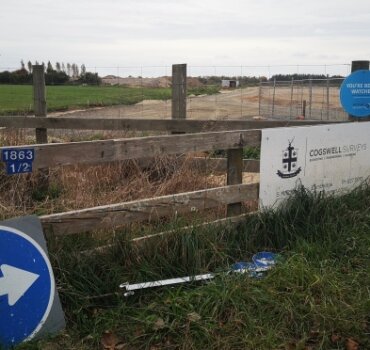
Plans for a 40-hectare subdivision on the western outskirts of Cambridge have taken a hit with the announcement independent hearing commissioners have refused the developers’ resource consent application.
Chairperson Greg Hill and Tara Hills said in their decision, released Tuesday, the application from Matthew and Mike Smith on behalf of 3Ms of Cambridge Ltd, was a non-complying activity.
It was not in “general accordance” with an already approved Waipā District Council structure plan which had gone through a lengthy public plan process with owners and became operative in March 2019, they said.
The application sought to subdivide four existing lots on Cambridge Road into 246 residential lots, a retirement village, commercial centre, two super lots for residential and high-density residential development, a school, roads and reserves.
Site clearing began earlier this year.
“3Ms is naturally disappointed with the decision and frustrated by the RMA processes which are getting in the way of delivering more houses to the Cambridge community,” director Matt Smith told The News.
“We are reviewing the decision and considering all of our options.
“We are also hopeful that council will show leadership in addressing this problem for the benefit of the Cambridge community.”
“We are also hopeful that council will show leadership in addressing this problem for the benefit of the Cambridge community.”
Known as the C2 growth cell, it has been earmarked for future urban development to accommodate a projected population boom in Cambridge.
Issues around a collector road and stormwater corridor along with a lack of recreation space, both key requirements in the council’s structure plan, were the crucial issues of concern for the commissioners.
Five adjoining property owners who opposed the application said some of the infrastructure needed for the subdivision would end up on their properties rather than on the 3Ms’ land.
In their submission, Frank and Colleen Ritchie said the developers’ proposal would see part of the main road and services pass through their property in Grasslands Drive. That would require major changes to their farming and horse training operations.
Gareth Hawthorn, also from Grasslands Drive, said the developers’ proposal was a “major departure” from the council’s structure plan. Under the application, his land could be subdivided, and he could be one of several landowners who would pay for the collector road.
Xiaofeng Jiang and Liping Yang of Cambridge Road said the adverse character and amenity effects resulting from the proposal were more than minor. They said the application did not promote sustainable management of natural and physical resources and was inconsistent with Waipā District Council’s District Plan.
Gary Alton, of Racecourse Road, said the proposal would see the roading and services infrastructure put through well-developed properties used for thoroughbred racing.
Jeanette and Desmond Brough, in association with Cambridge Cohousing Project Society, said the proposal to move the collector road, roundabout and stormwater swale infrastructure further west of the 40-hectare site would jeopardise plans to create a community-led housing project.
Council’s District Growth and Regulatory group manager, Wayne Allan, said the decision did not dispute the land being used for urban development purposes and this matter was not contested at the hearing.
“The C2 growth cell remains an important urban growth cell for Cambridge that we must activate and unlock to deliver more housing and public and community facilities, which the town urgently needs,” Allan said.
Council had committed to funding the growth infrastructure, he said.
Developers have until 27 July to appeal the decision.









